Cricket, India: A history
This is a collection of newspaper articles selected for the excellence of their content. |
Contents |
Introduction
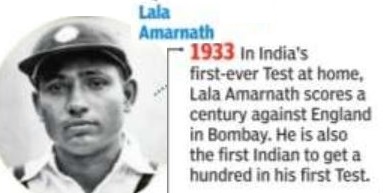

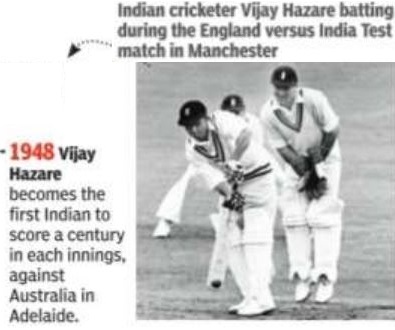

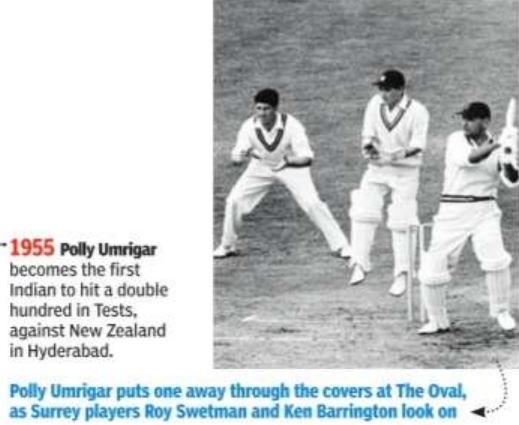
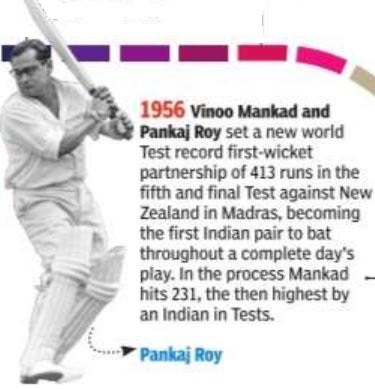
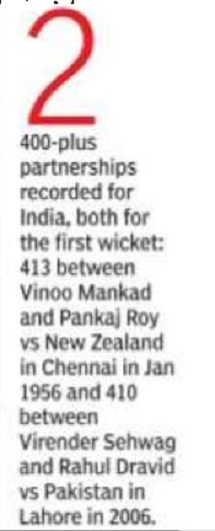
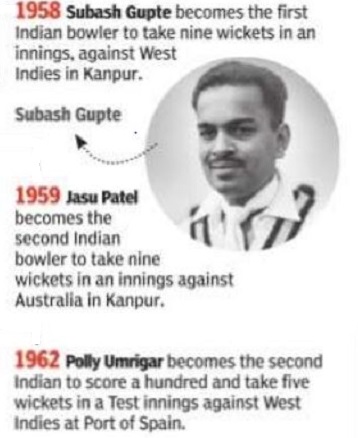
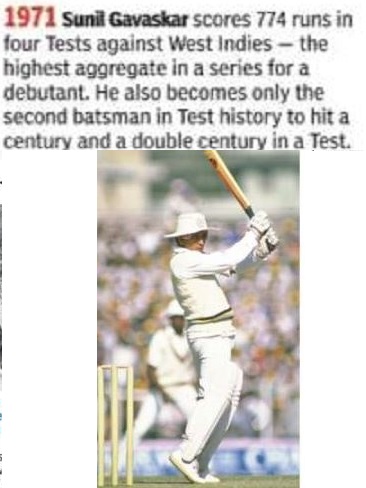

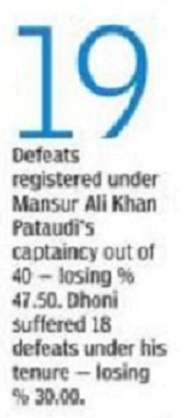
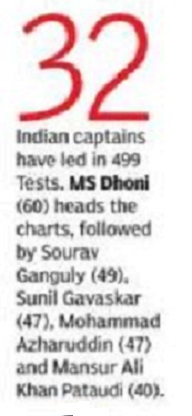
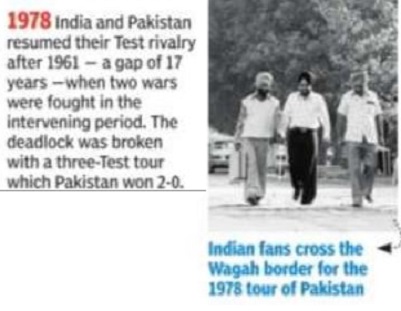
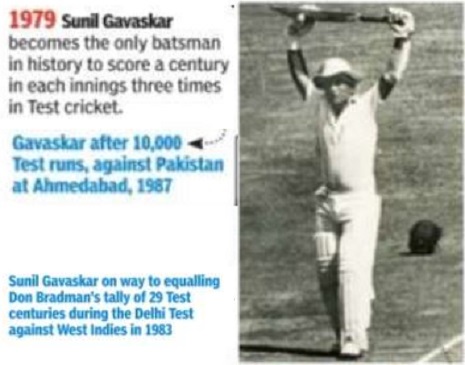
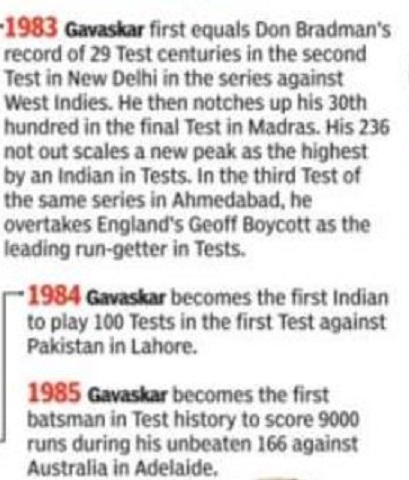
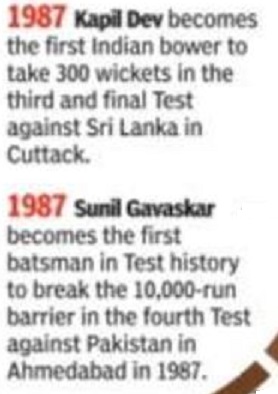
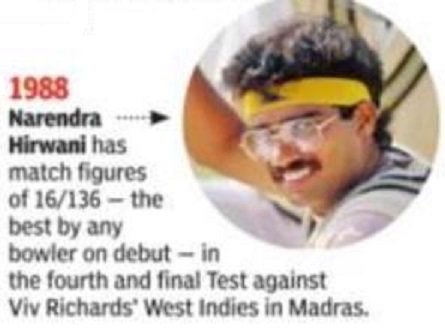

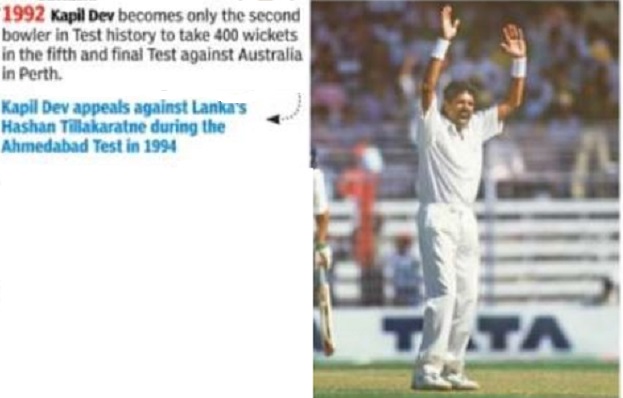
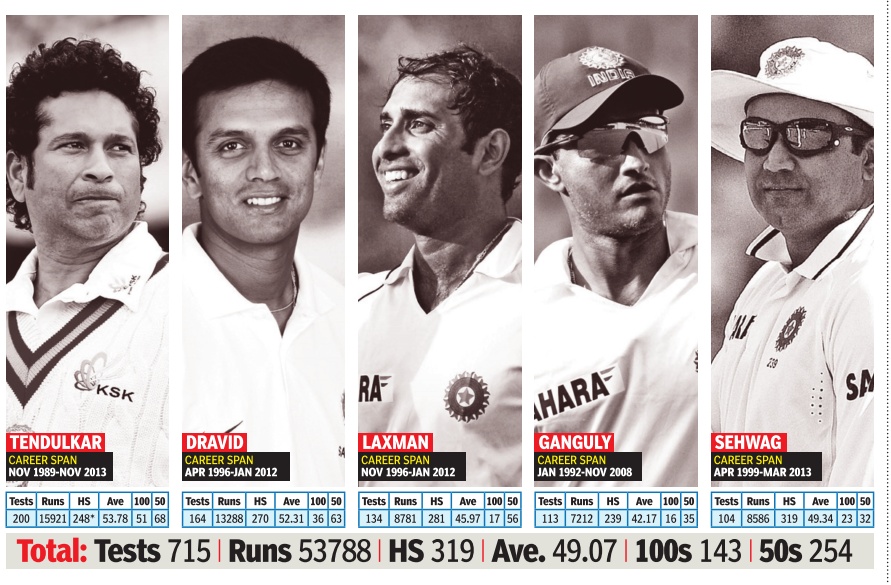
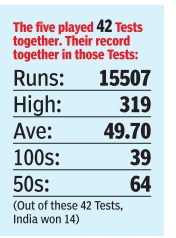

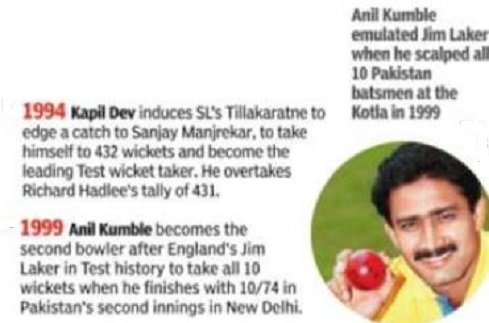
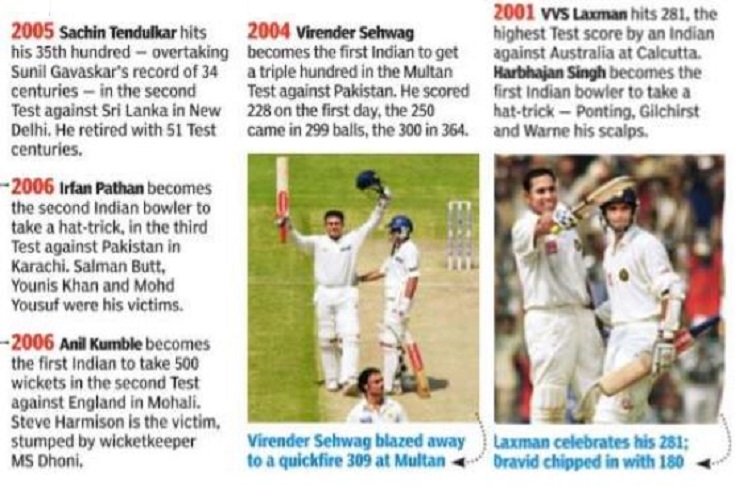
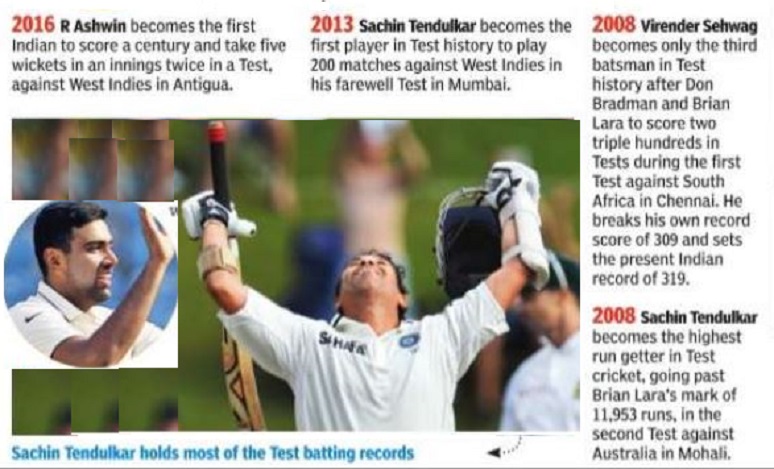
FOR INDIA, LIFE’S A PITCH
From minnows to World Champions, Team India has come a long way.
Boria Majumdar
The 1880s
Cricket in India had started in real earnest in the 1880s with the first Parsee tour of England in 1886. While this team was hastily put together and did not fare well, the second Parsee team to tour England in 1888 did much better. The improved standard of cricket in 1890s India is something the TOI drew our attention to when the Parsees, the early patrons of cricket, played G F Vernon’s touring English side in Bombay. Vernon’s team won all its matches in India except the one against the Parsees, which the visitors lost by four wickets. Commenting on the Parsee victory, Times of India wrote, ‘The Parsees are heartily to be congratulated on their really splendid victory . . . It is a great feather in the cap of the Parsees to have pulled off the match.’
1932
The improvement was consistent and it was finally in June 1932 that India cut their teeth in international cricket against the English at Lord’s. This tour, from its very inception, was controversial and was marred by a bitter tussle over captaincy, which was beautifully documented in the pages of TOI. The struggle between the Maharajkumar of Vizianagram and the Maharaja of Patiala for captaincy finally ended in favour of Patiala with Vizzy offered the strange designation of Deputy Vice Captain. He soon withdrew from the tour citing health reasons. Patiala followed suit and ultimately the Maharaja of Porbander led the first official Indian touring team to England. Interestingly Porbander was the worst player in the touring party and India’s first homegrown superhero, C K Nayudu, had the privilege of leading India out at Lord’s on June 25, 1932.
1971
After independence, TOI played an important role in documenting the growing importance of cricket in the Indian public imagination. Wins in the West Indies and England in 1971, considered watershed moments in Indian cricket history, found first-page mention as did India’s first ever Test win against England in 1952 in Chennai. K N Prabhu’s dispatches from the Caribbean in 1971 are invaluable in understanding the significance of this victory and in chronicling the early impact of Sunil Gavaskar on Indian cricket. To their credit the TOI correspondents were farsighted in their analysis. This is borne out from stories on Sachin Tendulkar’s debut series in 1989. Reporting from Pakistan, Sunder Rajan predicted that Sachin was a special talent.
Cricket nationalism
That cricket had become the most potent symbol of Indian nationalism was borne out from coverage of world cups in 1996, 1999, 2003 and 2007. The 1999 World Cup match against Pakistan occupied many pages drawing attention to the political significance of the encounter against the backdrop of Kargil. And in documenting the curse of match fixing in 2000 or the high of the 2011 World Cup triumph, the paper set new benchmarks. These reports will forever serve as valuable source for historians and aficionados of sport in understanding the emergence of cricket as India’s secular religion.
Bowlers for India post-2011 World Cup
The Times of India, Oct 30 2015
Rajesh Kumar
PACERS
ODIs
Mohammad Shami, Umesh Yadav, Bhuvneshwar Kumar, Ishant Sharma, Vinay Kumar, Mohit Sharma, Irfan Pathan, Stuart Binny, Praveen Kumar, Dhawal Kulkarni, Varun Aaron, Munaf Patel, Ashoke Dinda, Zaheer Khan, Jaydev Unadkat, RP Singh, Abhimanyu Mithun
Tests
Mohammad Shami, Umesh Yadav, Bhuvneshwar Kumar, Ishant Sharma, Vinay Kumar, Stuart Binny, Praveen Kumar, Varun Aaron, Munaf Patel, Zaheer Khan, Rudra Pratap Singh, Abhimanyu Mithun, Shanthakumaran Sreesanth, Pankaj Singh z Laxmipathy Balaji, Parvinder Awana and Sandeep Sharma played in T20Is only
Spinners ODIs
Ravichandran Ashwin, Ravindra Jadeja, Amit Mishra, Axar Patel, Suresh Raina, Harbhajan Singh, Rahul Sharma, Manoj Tiwary, Virender Sehwag, Ambati Rayudu, Parvez Rasool, Yusuf Pathan, Rohit Sharma, Yuvraj Singh, Pragyan Ojha, Karn Sharma, Murali Vijay (captured one wicket in two innings), Sachin Tendulkar
Tests
Ravicwhandran Ashwin, Ravindra Jadeja, Amit Mishra, Suresh Raina, Piyush Chawla, Harbhajan Singh, Virender Sehwag, Rohit Sharma, Yuvraj Singh, Pragyan Ojha, Karn Sharma, M Vijay (captured one wicket in nine innings), Abhimanyu Mukund, Sachin Tendulkar
Unruly spectators: 1967-2015
The Times of India, October 7, 2015
Major incidents of crowd trouble in the past in India
1967 : India vs West Indies, 2nd Test at Eden Gardens, Kolkata: Organizers had sold more tickets than there were seats. The ensuing chaos resulted in the crowd resorting to vandalism on Day Two of the Test. Assurances to players from officials finally saw the visitors win by an innings and 45 runs. A day's play was lost.
1984-85 : India vs England, 3rd Test at Eden Gardens, Kolkata On the third day, the crowd -already angry to see Kapil Dev sitting out -got infuriated with captain Sunil Gavaskar for delaying the declaration. They pelted fruits and garbage. The match ended in a draw.
1996 : World Cup semifinal at Eden Gardens, Kolkata Frustrated over India's poor batting, the crowd burnt stands, threw bottles and garbage and forced organizers to abandon the match when India were 120-8 chasing 252. The game was awarded to Sri Lanka.
1996 : India vs Australia, Titan Cup league match in Bangalore All hell broke loose when Azharuddin fell to a dubious decision while India were chasing 216. Plastic bottles were thrown, forcing the game to be held up for a little over 15 minutes. India won a thrilling game by two wickets.
1999 : India vs Pakistan, Asian Test championship, Kolkata Sachin Tendulkar collided with Shoaib Akhtar while taking a single and was ruled run out. Angry spectators disrupted the game, which subsequently restarted. But next day, organizers were forced to evacuate the unrelenting crowd.Players completed proceedings in an empty stadium.
2002 : India vs West Indies, third ODI in Rajkot India were 200 for 1 in 27.1 overs in reply to West Indies' 300 when the crowd started throwing water bottles and sandbags at visiting players. Play was abandoned.
2015 : Second T20I, India vs SA at Barabati Stadium, Cuttack India's poor batting angered a section of the crowd and the game was halted twice. A section of the stands had to be emptied.
1989-2015: The era of the Fab Five
The Times of India, October 22, 2015
Virender Sehwag's retirement in 2015 officially brought the curtain down on a brilliant generation of Indian batsmen known as the `Fab 5.' Shashank Shekhar looks back at their contribution to the game and what they meant to the fans
Virender Sehwag's retirement from international cricket also brought the curtain down on a glorious chapter in Indian cricket. A group of supremely skillful batsmen and driven cricketers, called the `Fab 5', helped take Indian cricket to unprecedented heights, culminating in the team ascending t h e nu m ero u n o s t at u s in Tests for the first time, late in 2009. The members of this celebrated, and now venerated, group were Sachin Tendulkar, Rahul Dravid, SouravGanguly, VVS Laxman and Sehwag. These men gave wings to the imagination of the Indian cricket fan, enthralled connoisseurs world over, brought dignity and grace to the sport and gave us fond memories to last a lifetime. With Sehwag closing the door on his career, this golden chapter passes into history . Seldom in cricket history, such brilliance has come together in one team. If one has to look for similar quality in one line-up, the mind goes to the feared pace battery of West Indies in the late 1970s and early 1980s when the Caribbeans used to field Andy Roberts, Michael Holding, Malcolm Marshall and Joel Garner with the likes of Colin Croft and Sylvester Clarke waiting in the wings. The `Fab 5' had almost everything that a true cricket fan could ask for. When playing, they were like a classical ensemble, profound, rich and in perfect rhythm. Yet, the orchestra was capable of changing gears and reaching buoyant crescendos as and when the situation demanded. They pooled their resources to lift the team. But while they complemented each other, they carved their own distinct niche. Their purpose bound them, their styles separated them. Similarly , Tendulkar, Dravid, Ganguly, Laxman and Sehwag had refreshingly different styles of expressing them selves with the willow. Tendulkar was the supremo, the modern Bradman who was just about perfect in everything he did in the middle. Dravid was the epic hero who combined great technique with mammoth powers of concentration.Ganguly was the fighter who batted with flair and tenacity while also marshalling his resources as captain. Laxman was the silent assassin whose batting was poetry in motion.Sehwag was the enforcer who rewrote the rules of batsmanship with his exceptional skill and amazing audacity . The `Fab 5' earned great respect for Indian cricket and renown for themselves for the way they were on and off the field. Tendulkar remains the biggest cricketer ever in terms of brand value and impact.Ganguly , now a leading cricket administrator, was a consummate general who gave belief to the Indian team and began the process which culminated in India gaining No. 1 status in Test cricket and winning the World Cup in 2011. Dravid, for many the best Indian Test batsman ever, is one of the most respected modern cricketers for not only his exploits on the field, but also as a statesman who has given a lot back to the game. Laxman has been hailed as one of the most elegant batsmen of modern times and a gentleman cricketer who eve ryone loved. Sehwag was the odd man out in the group with his `desi' background which he, of course, was most comfortable with. In fact, it was his untutored mind which let him play and live the way he has. He has little patience for things socially and politically correct.It showed in the outrageously effective way he has batted. The stats tell the tale of their monumental achievements. But these men are worth much more than the numbers. They have been wonderful ambassadors of the game. The added value to the sport they were part of and left the fans with many stories grand kids will be hearing in times to come. `Fab 5,' you will be missed.
2001-13: Crises lead to comebacks
The Times of India 2013/08/05
IN A HAPPY SPACE
Indian cricket’s most serious moments of crisis have led to some fighting comebacks. In fact, such has been the trend that the worse the crisis, the better has been the fightback. Here’s a look at how, when the game touched a big low, cricketers got together to give it all a new high...
2001: THE GHOST OF MATCH-FIXING IS BURIED
Soon after Delhi police caught Hansie Cronje on tape in 2000, the former South African skipper’s revelations opened a pandora’s box and cricket in India hit its first low in the wake of some very serious match-fixing allegations. Viewership and fan-following took a hit as investigations went on and suspicion — for the first time — got deeply entrenched in the game. The need of the hour was to restore its popularity in India, and it came a year later. VVS Laxman and Rahul Dravid came together in a historic 376-run stand at Kolkata’s Eden Gardens and it infused a great deal of confidence in the minds of one and all. It would mark the beginning of an exceptional run that culminated with India claiming the number one spot in Test rankings in 2008.
2003: START OF THE SOUTH AFRICAN SOJOURN RAISES A STORM
A shaky start against minnows Netherlands, followed by a ninewicket loss to eventual titlewinners Australia was enough to politicians to stall parliament proceedings, public to burn effigies on the street and miscreants to pelt cricketers’ homes right at the start of the World Cup. The BCCI too had come under immense pressure to as India struggled to find their feet in South Africa. However, just when experts and commoners alike had begun to give up, Sourav Ganguly’s team rose like the phoenix, winning the next eight matches to make it to the final. The title-clash didn’t go India’s way but a lot of pride certainly got salvaged in the run.
2007: DISASTROUS WORLD CUP CAMPAIGN HAS POSITIVE EFFECTS
Greg Chappell’s experiment, fractured relationships and the debate on a possible divide between the senior and junior cricketers in the team took a toll on the World Cup campaign in the West Indies as Rahul Dravid’s team didn’t go beyond the first round. It was India’s worst outing and the anger of demanding fans led to further agony. Chappell had to leave but in the year that followed, the senior most cricketers in the side —now led by Anil Kumble — worked on the road to resurrection. The Asia Cup, followed by an impressive tour of Australia and success sought at home saw Team India make it to the top of the ICC Test rankings for the first time ever.
2011: TWO WHITEWASHES LEAD TO HUMILIATION
The enigmatic MS Dhoni’s worst moment as captain of Team India came in the aftermath of eight successive Test defeats in 2011 (four each in England and Australia). The result of it wasn’t just a public backlash but selectors too demanding Dhoni’s scalp as skipper and wholesale changes in the team. Dravid and Laxman — who had resurrected Team India’s fortunes a decade ago — called it a day and seniors like Sehwag, Yuvraj, Harbhajan and Zaheer were dropped as Dhoni began work on a younger team. The result came in the form of victories at home, followed by a 4-0 whitewash of Australia in early 2013. Dhoni’s captaincy received a fresh lease of life with the freedom to build a new Team India as he wished.
2013: SPATE OF WINS OVERSHADOWS IPL MESS
Shocking revelations of the involvement of BCCI president N Srinivasan’s son-in-law in the betting scandal raised a storm in the Indian cricket fraternity. BCCI’s many conflicts of interests, MS Dhoni’s player-management company, Delhi and Mumbai police investigations and heavy politicking caught Indian cricket in a mess and it did appear that matters would get worse. Far away from it all, Dhoni and a young Team India fought great pressure on and off the field to win the Champions Trophy in style — the only title missing from India’s cupboard — to restore a bit of faith among fans. India reclaimed the ODI top spot in rankings and the winning streak has continued.
India troubled by spinners
The Times of India, November 6, 2015
Dean Elgar is not the only unknown
Dean Elgar is not the only unknown spinner to trouble India. There are other unassuming tweakers in the list:
KEN BARRINGTON, OLD TRAFFORD 1969
In reply to England's 490, India crashed to 208 with Barrington dismissing Chandu Borde, Bapu Nadkarni and Ramakant Desai. In the 2nd innings , he dismissed Polly Umrigar for 118 and Surendranath.England won by 171 runs.
MARK BURGESS, NAGPUR 1969
Burgess, a top-order batsman for New Zealand contributed to his team's 167-run win at Nagpur in 1969 their first ever over India. After top-scoring with 89, Burgess, who had only one wicket in nine Tests dismissed Wadekar, Venkataraghavan and Pataudi in eight overs.
GRAHAM HICK, KOLKATA 1993
India were well placed at 3465 with skipper Mohd Azharuddin looked set to get to his first double ton. But Hick, with his gentle off-spin dismissed Kapil Dev, Azharuddin for 182 and Venkatapathy Raju to trigger a collapse.
MICHAEL CLARKE, MUMBAI 2004
In the final match of the 2004 series in India, it was Clarke the bowler that sizzled. On a Wankhede minefield, Clarke stunned India in their second innings: 38 balls, six wickets for nine runs. No Aussie has claimed six wickets for fewer runs.
SHAUN UDAL, MUMBAI 2006
Aged 36, the Hampshire offie found a spot in the XI for the deciding Test in Mumbai, with India leading 1-0. Udal took 4-14 in 9.2 overs as India were bowled out for 100. It was his last game.
JASON KREJZA
The Tasmanian achieved the second best figures by an Australian on Test debut. However, he also conceded more runs than anyone in their maiden Test appearance. His debut inning figures of 8-215 and match haul of 12-358, troubled India.
500+ conceded by India: 2012- 2014
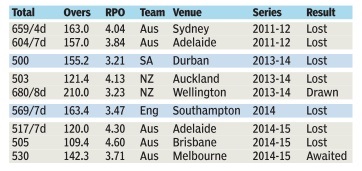
2016
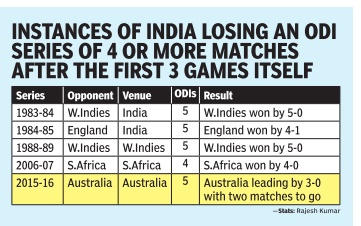
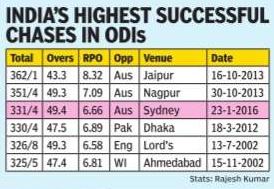
2016, West Indies: India wins away series
The Times of India, Aug 24 2016
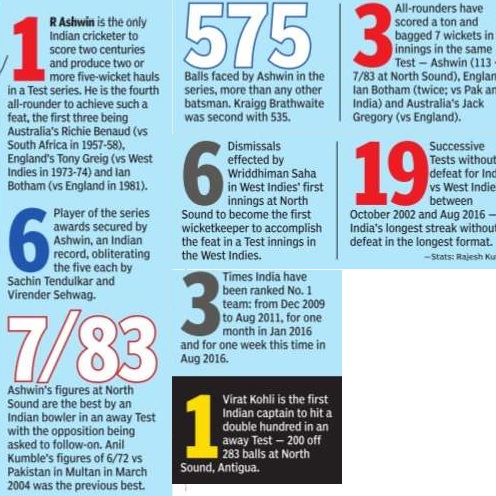
Shashank Shekhar India's four-Test West Indies series finished with the washed-out final Test at the Queen's Park Oval in Trinidad.
PLAYER OF THE SERIES l RAVICHANDRAN ASHWIN (235 RUNS AT 58.75; 17 WICKETS AT 23.17):
The off-spinner who has always been a capable lower-order bat metamorphosed into a genuine Test allrounder.
Ashwin, the top allrounder in the ICC rankings, delivered with both bat and ball virtually every time the team needed him to. His bonus offering was with the willow -he constructed two centuries in four innings and finished with 235 runs in the series, only 16 less than the highest from both teams -251 by Virat Kohli. Ashwin complied 35 more than the highest anyone from the other camp could manage: Kraigg Brathf waite's 200 in seven innings.
While his first ton, in Antigua, helped the team consolidate its commanding position, his second, in St. Lucia, took India out of a deep hole. He more than justified his promotion to No. 6 in the batf ting order, playing with the attitude of a top-order batsman.
With the ball, he was, expectedly, the tormentor-in-chief, preying on the victims with a heady concoction of turn, dip, flight and subtle change of pace. His 17 wickets in the series, in which one Test was almost entirely washed out, was way more than any other bowler from both sides.
GAINS FOR INDIA MOHAMMAD SHAMI (11 WICKETS AT 25.81):
The pacer made an impressive comeback into the team after 18 months in the wilderness following an ankle injury which needed surgery . His hard work at the NCA before the national callup built him up for the grind.
Shami was brisk and bowled a testing length, drawing high praise from captain Virat Kohli and coach Anil Kumble. Pace partner Umesh Yadav said the team had no doubt that Shami would be back in style as he was a bowler with `natural excellence.'
WRIDDHIMAN SAHA (205 RUNS AT 51.25; 9 CATCHES, 2 STUMPINGS):
The wicketkeeper-batsman, accomplished as usual behind the stumps, established his worth with the bat too this time, garnering 205 runs in the series, including a maiden century, which came in trying circumstances in the third Test.
Saha, who grew in confidence as the series progressed, has virtually stamped his name on the wicketkeeper-batsman slot for some time to come. No surprise, his performance drew praise from many former wicketkeepers like Jeff Dujon and Farokh Engineer.
BHUVNESHWAR KUMAR (6 WICKETS AT 9.83):
Bhuvi was another pacer who came back strongly after struggling with injury and form issues in 2016. His surprise inclusion for the St Lucia Test bore fruit when he opened up the gate to victory with a sensational spell of swing bowling on the fourth day. He moved the ball more than any other pacer on show in the match.
INNINGS OF THE SERIES ROSTON CHASE (137 N.O. IN KINGSTON):
The phlegmatic Chase, playing in only his second Test, followed up his five-wicket haul in India's first innings with an innings of such control that it put the established batsmen in the West Indies to shame.At 484 in their second essay and still 256 short of matching India's first innings score of 500, the hosts were gone for good. But Chase's advent changed the contour of the game. He held the innings together and played the rampant Indian bowling like a seasoned pro to lead the team to safety. Chase was on the crease for close to six hours.
PARTNERSHIP OF THE SERIES: ASHWIN-SAHA (213 FOR 6TH WKT IN ST. LUCIA):
India were losing their grip at 1265 in the Gros Islet Test when Ashwin and Saha came together to blunt the West Indies attack on a difficult batting strip.Their 213-run partnership in 71.2 overs gave India a handy first-innings total, leading to a crushing win. Skipper Kohli called it the `most important partnership of the series.'
BOWLING SPELL OF THE SERIES BHUVNESHWAR KUMAR (11.4-6-165 IN ST. LUCIA):
With an entire day lost to rain, the third Test looked like meandering into a stalemate till Bhuvneshwar began weaving his magic in the post-lunch session on Day 4. Playing Test cricket after 18 months, Bhuvi made the ball snake out and snake in to leave the West Indies batsmen groping.
Highest individual score (including minor cricket)
The Times of India Jan 05 2016
Rohan Alvares
Mumbai
Pranav Dhanawade, a 15-yearold student of KC Gandhi High School, Kalyan has broken a century-old cricketing record after amassing a staggering unbeaten 652 against Arya Gurukul School in an Bhandari Cup match on Monday . The tournament is an under-16 inter-school event organised by the Mumbai Cricket Association (MCA) mainly for the benefit of suburban schools. His school, KC Gandhi finished Day One of the two-day match at a mammoth 9561.
Pranav's epic knock which, incredibly , came off just 199 balls and included an eye-popping 72 fours and 28 sixes, saw him take over the mantle of `highest individual score' (including minor cricket) from AEJ Collins. Collins had held the record since 1899 when he struck an un beaten 628 for Clark House against North Town House in UK. In the course of his multiple record-breaking feat, Pranav also surpassed Prithvi Shaw's marathon 546 scored two years ago in a Harris Shield tie, an innings that had previously been the highest individual score in any form of cricket in India. His father Prashant, an auto rickshaw driver


